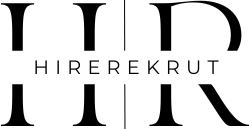Our Training Module
MEAN Stack



Start by understanding the fundamentals of MongoDB, Express.js, Angular, and Node.js, and their roles in web development. Learn about MongoDB as a NoSQL database, Express.js as a web application framework for Node.js, Angular as a frontend JavaScript framework, and Node.js as a server-side JavaScript runtime environment.
1
Foundation Step I
Install MongoDB, Express.js, Angular CLI, and Node.js on your local machine. Set up a text editor or integrated development environment (IDE) for writing code. Learn how to write unit tests and integration tests for your Node.js, Express.js, and Angular applications using testing frameworks like Mocha, Chai, Jasmine, and Karma. Explore deployment options for MEAN stack applications, including deploying to platforms like Heroku, AWS, or DigitalOcean.
2
Foundation Step II
Begin with Node.js basics such as event-driven architecture, asynchronous programming, modules, and the Node Package Manager (npm). Learn how to create and run simple Node.js applications.
3
Foundation Step III
Dive into Express.js and its core features such as routing, middleware, request handling, and template engines. Learn how to create RESTful APIs and web servers using Express.js.
4
Intermediate Step I
Explore MongoDB's document-oriented data model, collections, documents, and basic CRUD (Create, Read, Update, Delete) operations. Learn how to connect to MongoDB from Node.js using the official MongoDB Node.js driver or Mongoose, an Object Data Modeling (ODM) library for MongoDB and Node.js.
5
Intermediate Step II
Combine MongoDB, Express.js, and Node.js to build the backend of a basic web application. Create routes, handle HTTP requests, and perform CRUD operations on MongoDB data.
6
Intermediate Step III
Begin with Angular basics such as components, modules, services, templates, and data binding. Learn how to set up an Angular project using the Angular CLI and create components to build the frontend of your web application.
7
Intermediate Step IIV
Integrate the frontend built with Angular with the backend built with MongoDB, Express.js, and Node.js to create a full-stack MEAN application. Implement features like user authentication, authorization, and real-time data updates using Angular and Express.js.
8
Expert Step I
Understand the importance of authentication and authorization in web applications. Learn how to implement user authentication and authorization using techniques like JSON Web Tokens (JWT) and sessions in Express.js and Angular.
9
Expert Step II
Learn how to handle errors gracefully in Node.js, Express.js, and Angular applications. Explore debugging techniques and tools like console.log, debugger statements, and the Angular Developer Tools to troubleshoot and fix issues in your code.
10
Expert Step III


Get In Touch
Have any Query In your Mind?
We’re here to help! If you have any questions, comments, or concerns, please don’t hesitate to reach out to us using the form below. Our dedicated team will get back to you as soon as possible.
For Any help
+91-9027484435
Mail us 24/7
hirerekrut@gmail.com


